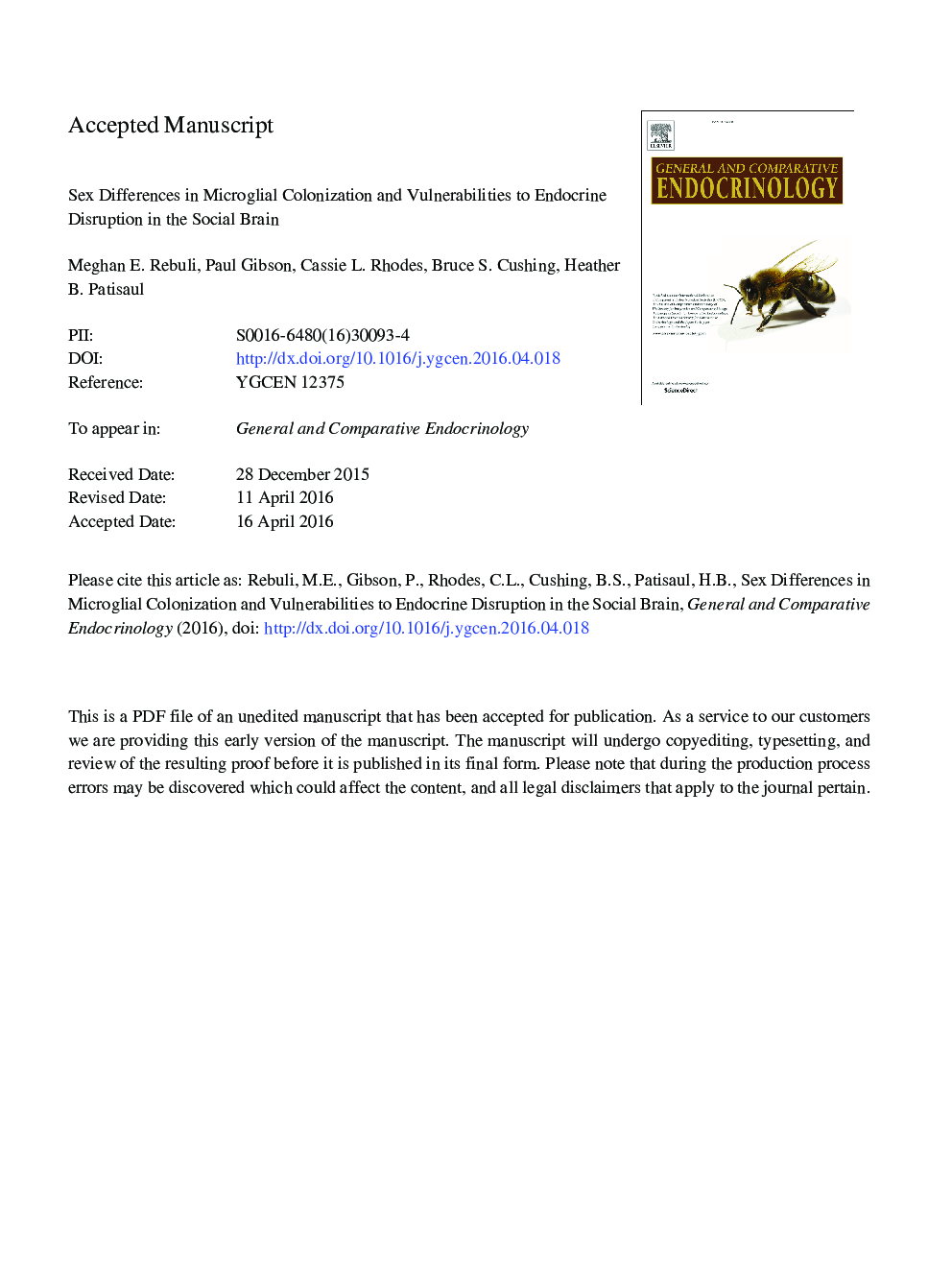| Article ID | Journal | Published Year | Pages | File Type |
|---|---|---|---|---|
| 5587691 | General and Comparative Endocrinology | 2016 | 28 Pages |
Abstract
During development, microglia, the resident immune cells of the brain, play an important role in synaptic organization. Microglial colonization of the developing brain is sexually dimorphic in some regions, including nuclei critical for the coordination of social behavior, suggesting steroid hormones have an influencing role, particularly estrogen. By extension, microglial colonization may be vulnerable to endocrine disruption. Concerns have been raised regarding the potential for endocrine disrupting compounds (EDCs) to alter brain development and behavior. Developmental exposure to Bisphenol A (BPA), a ubiquitous EDC, has been associated with altered sociosexual and mood-related behaviors in various animal models and children. Through a comparison of the promiscuous Wistar rat (Rattus norvegicus) and the socially monogamous prairie vole (Microtus ochrogaster), we are the first to observe that developmental exposure to the synthetic estrogen ethinyl estradiol (EE) or BPA alters the sex-specific colonization of the hippocampus and amygdala by microglia.
Related Topics
Life Sciences
Biochemistry, Genetics and Molecular Biology
Endocrinology
Authors
Meghan E. Rebuli, Paul Gibson, Cassie L. Rhodes, Bruce S. Cushing, Heather B. Patisaul,
